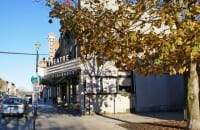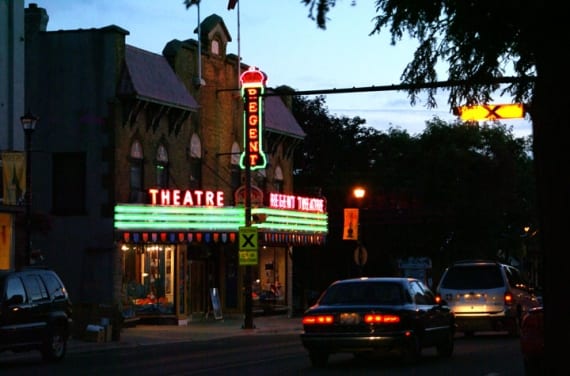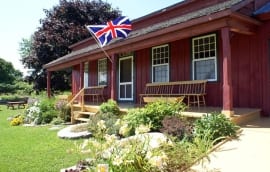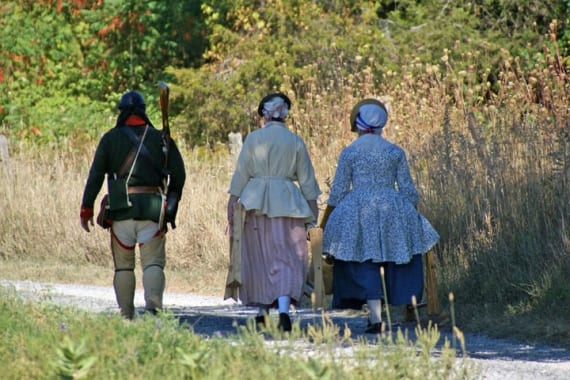
Thank you for the opportunity to speak with you today. My presentation is drawn from many places in my life. For many years, I worked as a CBC broadcaster so I know a little bit about telling stories effectively using multimedia.
For over a decade, I travelled the world documenting Canada’s relief and development projects. I used to take these epic journeys to distant places far beyond any tourist spots, get out of a plane, and step back into the 18th century where people still drive donkey carts and live in mud houses. I met some of the poorest people in the world, and if they were to wait for their governments to assist them, they’d be waiting a long time. They didn’t have any money. What they had was lots of community resolve. So they were doing all kinds of things buildings schools, health clinics, houses, wells and starting small businesses to improve their lives. I have never forgotten these remarkable people and I have borrowed from that experience witnessing the power of community resolve.
I have a great interest in local history – my “history addiction” as I call it. My interest began many years ago with my Masters of Journalism thesis on the canning industry of Prince Edward County, once the centre of the industry in Canada. I was an author in search of a subject back then, but I knew within a very few interviews with old-timers talking about the early days of the industry in their kitchens and on their verandahs, that I was sitting on a great untold story of Canada.
Finally, I have spent much of my life working with non-profit organizations as an Executive Director, board member and chair, volunteer and consultant. Over the last decade, I have worked with a volunteer board to restore a heritage property, The Glenwood Cemetery in Picton. So I have lived the concept I am presenting to you today. And the concept is this:
Every community has its stories to tell. These are often hidden away in the collections of museums, libraries, cemeteries and archives. But this “hidden history” can be transformed into “popular history” – goods and services that meet the worldwide consumer demand for history and heritage. In this way, history and heritage can be considered a commodity that can be mined and refined, processed and packaged, marketed, distributed and retailed just like any other product.
Heritage organizations are often considered “municipal loss leaders” for the taxpayer funding they require each year. But I believe they are storehouses of history – “history factories” – that can become “profit centres” if only we developed the untapped potential lying dormant in our communities to develop a “heritage economy.”
This presentation is focused on two aspects of heritage:
- PUBLIC COMMUNICATIONS and COMMUNITY ENGAGEMENT on the importance of history and heritage
- THE MARKETPLACE for history and heritage
Most of us working with small community charities – and this is especially so with heritage organizations, museums, cemeteries, and heritage societies – are “heritage beggars” highly dependent upon dwindling grants, annual funding from municipal governments with limited funds and great demands, and the charity of our communities already supporting a great many other worthy causes.
I believe heritage is ultimately about money. And until we can find ways to finance ourselves, we will always be heritage beggars. We will watch our landmark buildings and special places disappear and be unable to intervene; our organizations will simply age and tire and fade from view in the coming decades; and we will not be a factor in shaping an alternative vision for our communities that embraces and respects the past. We will –at best – watch from the sidelines.
For all these reasons, heritage remains a last priority in most communities – an afterthought. But what if we changed our thinking? What if we did something memorable? Could we change our world? Yes, I believe so…. because that is happening in my own community of
Most of us working with small community charities – and this is especially so with heritage organizations, museums, cemeteries, and heritage societies – are “heritage beggars” highly dependent upon dwindling grants, annual funding from municipal governments with limited funds and great demands, and the charity of our communities already supporting a great many other worthy causes.
I believe heritage is ultimately about money. And until we can find ways to finance ourselves, we will always be heritage beggars. We will watch our landmark buildings and special places disappear and be unable to intervene; our organizations will simply age and tire and fade from view in the coming decades; and we will not be a factor in shaping an alternative vision for our communities that embraces and respects the past. We will –at best – watch from the sidelines.
For all these reasons, heritage remains a last priority in most communities – an afterthought. But what if we changed our thinking? What if we did something memorable? Could we change our world? Yes, I believe so…. because that is happening in my own community of Prince Edward County.
The Challenge of Heritage Properties
Glenwood Cemetery: A Case History
Some years ago I became active in the restoration of an historic cemetery, The Glenwood Cemetery, in my hometown of Picton. Glenwood is a spectacular, 62-acre Victorian cemetery located in the heart of Picton. It’s a timepiece looking just like it did when it opened in 1873. But by 2000, Glenwood was in rough shape because of:
- 50 years of community neglect
- Three heritage buildings needing urgent repair
- Four kilometres of impassable roads
- Lost records
- Three heritage buildings needing urgent repair
- Four kilometres of impassable roads
- Lost records
- Fallen monuments
- No professional staff/equipment
- No revenues
Back then, Glenwood gave new meaning to the word “non-profit.”
It’s not easy to market a cemetery. But we began to look at the cemetery as a conventional business with a product line. At the worst of times, we came up with some pretty whacky ideas – “scratch and lose lottery tickets,” “two for one sales,” and “Lucky Wednesdays” just to relieve all the stress we were under. But that was the beginning of our discussions of Glenwood as a product that needed to be marketed. And in the end, we decided to market the story of Glenwood.
Communicating a Vision
We developed a small brochure to tell the story of Glenwood, its history, our vision for it, and how people could help by donating, volunteering, purchasing a plot and leaving a gift to the cemetery as part of their estate planning. The brochure cost $1,200 to print 5,000 copies. Some board members argued we couldn’t afford it. I asked for donations from the board to pay the costs, and those against the expenditure said,” I’m not going to give you any money. I’m giving my time.”
I said,” We’re not raising time tonight. We’re raising money for this brochure so we can go into the community and raise awareness and funds for the cemetery.” Some board members never did contribute and they left the organization. But we got the money. We printed our brochure. And we engaged the community by presenting it to every community group who would listen. And they did.
Measureable Results
In 2000, Glenwood took in about $5,000 in donations from kind people who gave us money even when we didn’t ask. In 2001/2002 after our community campaign, we took in nearly
$90,000 in donations – money that we were able to match with two $75,000 grants for use for one of our projects, the restoration of the Chapel, an elegant stone building built in 1901, and a project that would take eight years and nearly $300,000 to complete.
We had increased media and public interest and an increase in ongoing donations.
We discovered we were successful because we were marketing “memories” not a cemetery. People sent letters with their donations that talked about their grandparents, their parents, and sometimes their children who were buried at Glenwood. That’s a powerful force to be harnessed. And it all started because through our public outreach campaign, Glenwood was no longer “hidden history.”
Next Steps:
We decided we needed to have people experience the cemetery to see the restorations that were taking place so we developed walking tours. Our Gallows & Graveyards Walking Tours are now in their fourth year. They are held on summer weekends with students in costumes taking visitors on tours of historic churchyards and cemeteries and into the old gaol where we tell the story of two men hanged in 1884.
We developed a series of fall and winter lectures series on history and heritagetopics. And we started to make new partnerships within our community.
Community Engagement:
We started with a new partnership with our municipal government who had for years paid a small $20,000 annual grant to assist in the operation of the cemetery. Despite many pleas from the cemetery over many years, the funding remained the same. We decided that we had to negotiate a new agreement that saw our local government increase their grant significantly to $45,000 annually to allow us to hire professional staff.
Since by law local governments have to take over cemeteries if they fail, our council had the choice to partner with us for part of the costs…or they could assume it all. This was not without controversy. But in the end, council reluctantly increased our grant, we hired staff, and the board was able to go back to the work boards should be doing rather than mowing grass and arranging burials.
New partnerships with other heritage organizations
Our success came at a cost to the museums as council simply “robbed Peter to pay Paul” taking money from their budget to give to us. When we found that out, we met with museum staff to explore how we might work together. Those discussions lead to the co- development of the walking tours, lecture series, and the participation of yet another heritage property in our community – The Regent Theatre, an old cinema located on Picton’s Main Street. And this partnership led to another public outreach initiative – The History Moments series.
The History Moments Series
The History Moments are two – minute video vignettes on local history themes that play before movies at The Regent, are broadcast on cable TV, distributed into area schools, libraries, museums, used in the interpretative program for the over 550,000 annual visitors to the Sandbanks Provincial Park, retailed in many County stores, and broadcast online on my company website. Features showcase early settlement, first industries, prominent people, and significant events that have shaped the history of our community.

The History Moments are sponsored by local businesses and organizations. It’s an advertising value for them which supports a community awakening to the rich history that is all around us. And they are incredibly popular.
Measureable Results ten years later
The restoration of Glenwood is really a great heritage success story. Over the past decade we have:
- Made major road repairs
- Undertaken a reforestation project to replace our aging urban forest
- Digitized our records and placed them on a website
- Hired professional staff and purchased new equipment
- Renewed the board
- Attracted major donations and bequeaths
- Developed new community partnerships for collective action
- Preserved a community heritage property
Why does heritage matter?
I do a great deal of public speaking in communities across Eastern Ontario and I am sometimes asked why does this matter? Here’s what I say:
It matters because the future of the Past is so uncertain in most communities.
Aging Volunteer Organizations
The big question is what’s going to happen when you and I can’t do our volunteer work anymore
I believe it’s a great folly to believe that things will always be just because they have always been. I could name you a dozen organizations on the verge of folding in Prince Edward County. They are older; they have no money; no staff; and no succession plan. They often work in isolation competing for limited resources, volunteers and event dates.
But they are also inter-connected and the failure of one can mean the failure of another. At Glenwood, we count on the annual generous donations from many of these organizations. If they fail, then perhaps we will fail. Over the next 10-15 years, many organizations will fail and fade into the past in communities across Canada – a sort of collective collapse of communities.
Municipal governments should be interested in this because the millions of dollars raised each year by volunteers in their communities – all for free – may not be there in the future. The thousands of hours donated – for free – to a wide range of community services may no longer be available. So what’s going to happen when you and I can’t do that work anymore?
We need to think bigger. We need to act collectively to share limited resources. We need to become the sum of our parts rather than remain as isolated and largely irrelevant organizations. This is how we can renew our organizations and plan for a future time. And if not every organization can be saved, perhaps others can carry on their work. That’s why history and heritage matters.
Reaching Future Leaders
The next generation of community leaders and volunteers are students. We need to engage them in the history that is all around them. We’re tried to do this.
Teachers in Prince Edward County are using the History Moments as learning resources.
This year, students at the high school in Picton are selling the series to raise money for a trip to battlefields in Europe where Canadians fought. The Hastings and Prince Edward District School Board is sponsoring a History Moment on early education in the area.
There are 54 schools and 17,000 students in the Hastings & PEC School Board. You can see the potential of engaging schools, teachers and students in our project. That’s why heritage matters.
Our Disappearing Heritage
Last August, we tore down on a Methodist church built in 1875 located on our Main Street.
It is just down the street from the block we tore down in March last year to build a new box store. That will sit next to the mini-mall we built in the 1970s after tearing down all the gracious old homes that lined our main street.
This is a squandered inheritance. It is testament to poor planning, a lack of vision, and to mistaking progress for the same bland look that is everywhere else. If you tear down all the special places in your community, you have to wonder what’s so special about your community? And the sad answer to that is “Nothing.”
We have had some successes in restoring heritage buildings, but the fact is we are tearing down heritage properties faster than we can restore them. I believe most communities are engaged in this battle to save open spaces, landmark properties, farmland and all the special places…and it is a battle we are losing. That’s why this matters
A Lost Business Opportunity
Finally, it matters because it is such a lost economic opportunity. If we could transform this dormant asset in our communities – our hidden history – into popular history – goods and services that meet the worldwide marketplace for history and heritage, we could develop a “heritage economy” that powers up our local economies, turns heritage organizations from municipal loss leaders into profit centres, and preserves the historical integrity of our communities
We need to value heritage not so much as a “warm and fuzzy” – a vague, cultural asset. We need to consider it as an untapped commodity –“ a hidden wealth” that can drive our local economies. Heritage ultimately is about money…. and big money at that.
The Marketplace for History
History is one of the top three reasons why people travel. The History Channel links advertisers with a consumer demographic – 9.2 million boomers and their parents. Every month, 68 million people around the world Google the word “history.”
Gettysburg makes $91 million/year and has created nearly 2,500 jobs from the 1.2 million people who visit annually. Every year, they tell the same story and make $91 million dollars. So why don’t we tell our stories to the world and develop a heritage economy?
Manufacture professionally produced goods and services
We need to develop our own line of heritage products such as:
- Specialty wines and foodstuffs
- Videos, books, lectures, and bus, walking, and historic house tours
- Period events (re-enactments, Picton Fair as an 1880s period fair, War of 1812 bicentennial, 400th anniversary of Champlain’s visit in 2015, and the 200th birthday of Sir John A. Macdonald in 2015)
The Macdonald Project
John A. Macdonald spent his early years in the Picton area and as a teenager, he practiced law there in the 1830s. The Macdonald Project is an initiative to erect a bronze sculpture of him in Picton during the 200th anniversary of his birth in 2015. This project and Macdonald’s birthday have the potential to be a major local, regional and national event.
The Miss Supertest Celebration – August, 6,7th, 8th 2011
50 years ago this August, the Canadian race boat Miss Supertest captured her third – and last – victory in the Harmsworth international races held in Picton.
On August 6,7,8th we will celebrate this sports history with the launch of a Canada Post commemorative stamp honouring the boat, and a weekend of boat displays and activities.
The celebration has the possibility of being a test case for history in Prince Edward County to show the economic benefit to the community of this once-in-a- lifetime event.
Heritage Revenues
Over the past 5 years, our partnership of several community heritage organizations has evolved and a long- term plan is emerging to:
– Retail heritage products to our 700,000 annual visitors
– Use our heritage products for worldwide online Tourism Marketing
– Track retail sales with a % saved in a Heritage Fund administered by The County Community Foundation
– Our Heritage Fund is complemented by donations and bequeaths and supplemented by 1% municipal heritage fee on new development
Objectives:
- To transform “the hidden wealth” of our history into a heritage economy
- To transform heritage properties (archives, cemeteries, libraries, and museums) into profit centres
- To create “popular history” products as tourism marketing resources
- To create public and educational resources
- To promote new community partnerships for greater community engagement and better use of limited resources
- To create jobs for young people and for our trades
- To create new revenue streams for heritage organizations
- To assist private property owners and businesses to maintain heritage properties
- To preserve our community history and heritage before it is lost to Time.
We’re not there yet…. but we’re working towards this and the formation of a new heritage organization tasked to take on this work – to be an umbrella group for heritage groups to work together, and to be an instrument of change. We have started in our community to “create the will” just by transforming the “hidden history” in our community into “popular history.” And we have changed our world, just a little, by forging new partnerships with heritage groups, diverse sectors like municipal government, schools, private businesses sponsoring the History Moments, crafts people making heritage materials, and retailers who sell our products. We have created public education materials to engage our community and to awaken them to the rich history that is all around us.
The third series of History Moments will be launched on Monday, July 4th at 2pm at The Regent Theatre in Picton. I invite you to attend this free public event to celebrate our local history. The series will then be featured at the first ever Picton film festival that takes place in July. This year we will be launching a series in Belleville and Hastings County in partnership with groups there.
We have also developed some media partners. If you read Watershed Magazine, a magazine distributed from Cobourg to Kingston, you will notice our featured history articles. The Miss Supertest event is featured in the latest summer edition. So we have made a small start on developing a “heritage economy” by developing a line of heritage products to retail within our community. Marketing our product lines is the next phase of the project. Along the way, our history project has fostered a critical mass for change capturing the interest of our community and directly engaging them as participants in history and heritage.
We have made History.
I will leave you with a question. Why don’t you make history in your community and create the will – a community resolve – to preserve your history and heritage before it is lost to Time?
Thank you very much.














